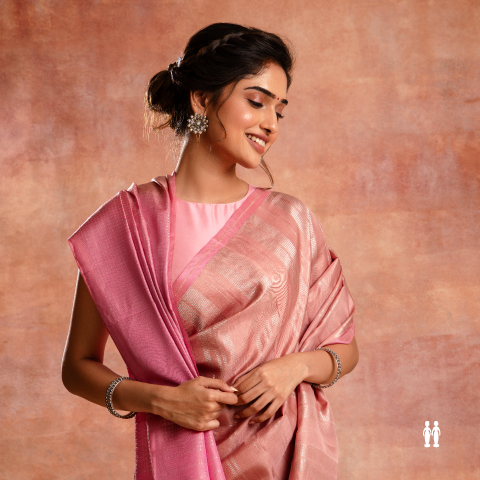The regal Kanjivaram Silk Saree has always been a beautiful canvas to portray our traditional and timeless motifs which carry strong connotations and significance. Each of these motifs is widely regarded and draws inspiration from mythology and nature around us. These symbols are recurrent across art forms, from paintings, and sculptures to temple architecture. One of the celebrated auspicious motifs is the gandaberunda motif, also known as Iruthalai Pakshi Motif.


Have you ever wondered what the two-headed iruthalai pakshi motif seen on your Silk Sarees signifies? In India, the bird traces its origin back to the Puranas. The iruthalai pakshi is a double-headed eagle and an incarnation of Lord Vishnu during the Treta yuga. The motif has been seen in emblems of several rulers of India and is widely renowned for its mysticism and magical strengths. The first instance can be traced back to the Vijaynagara empire where this imagery was used on the coins of the kingdom. Even today, it is recognized as Mysore’s royal insignia. The motif is usually depicted in many scriptures and temple sculptures as clutching elephants in their talons and beaks, which demonstrates its immense power.


The legend surrounding this mythological bird is as follows. To protect his devotee Prahalada from the wrath of his father and demon king Hiranyakashipu, Lord Vishnu took the form of Lord Narasimha, a half-lion, half-man avatar. He killed the demon king using his claws during twilight. But even after killing him, Lord Narasimha was overcome with emotions and extreme anger. Seeing this, the other Gods and Devas feared overall destruction and sought Lord Shiva’s help. Lord Shiva took the form of Sarabha - a part lion and part bird avatar to becalm Lord Narasimha.
There are two different versions of the story that describe what happens next. According to one version of the story, Lord Sarabha lost focus on his goal and began destroying everything around him. Lord Narasimha battled Sarabha in the guise of Gandaberdunda or Iruthalai Pakshi to put an end to the chaos.
According to a different version, when Sarabha tried to appease Narasimha, the latter became enraged and took the form of Iruthalai Pakshi to combat Sarabha. After a prolonged battle that lasted several days, he realised the damage their fight has caused and immediately took the form of Lord Vishnu to put an end to the conflict and restore peace.
Carrying forth a timeless legacy
Motifs like these are a mirror to our past that give us a glimpse into our rich traditions and culture. Their appeal and significance have grown over the years and as custodians of this legacy, we must protect and promote them at all costs. At Sundari Silks, we take immense pride in bringing forth collections that are interwoven with motifs like the Iruthalai Pakshi, which is a testimony to our country's distinct and diverse designs






